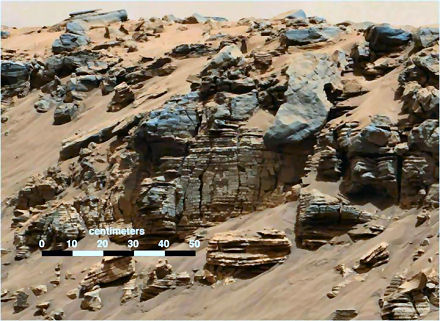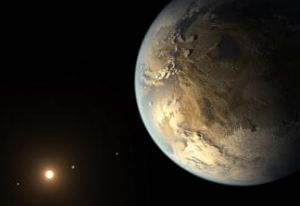
Scientists poring over images from Mars Odyssey believe they have identified what could be the entrances to seven large caves. Termed “skylight” entrances because they drop vertically from the surface of the planet, the entrances range in diameter from 100 to 300 meters. Because they sit almost “flat” on the surface of the planet, skylight entrances can be studied extensively from orbit, something not possible with a more vertically oriented entrance.
It appears that the sub-surface regions the entrances open into may be relatively deep – at least 70 to 100 meters – according to thermal imaging, which can only provide aminimum depth. One lucky observation, however, caught sunlight illuminating the floor of one of the caves at a depth of 130 meters. The observations were presented at the Lunar and Planetary Science Conference in Houston.
All the caves – dubbed Dena, Chloe, Wendy, Annie, Abbey, Nikki and Jeanne – are located high up on Arsia Mons, a 20,000 meter high volcano that is second only to Olympus Mons in size. The astro-biologists in the research team believe that such a high altitude may preclude life in these seven caves, but they speculate that other caves at lower altitudes might be more conducive to biological processes. The team has already begun looking for skylight entrances at lower altitudes.
As well as harboring native Martian life, such caves may also offer future human explorers a relatively safe environment to dwell in while they explore the planet.


















Comments are closed.